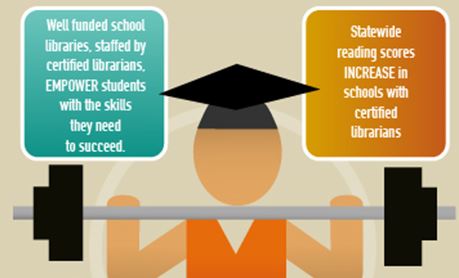
School Library Journal recently reported on the newest statewide study on the impact of school libraries for student success, commissioned by the South Carolina Association of School Librarians (SCASL). While this now marks more than a dozen states that have conducted studies showing a link between school library programs and student achievement, this study was the first to show school library’s contribution through test results for specific English language arts (ELA) and writing standards.
In South Carolina in 2012-2013, 7 school library characteristics were linked to student achievement, even when controlling for factors such as gender, race/ethnicity, disability, and free or reduced meal eligibility. Those characteristics are: 1) library staffing, 2) total library expenditures, 3) librarian hours spent on teaching activities, 4) circulation of library materials, 5) size of collection, 6) availability of computers, and 7) number of group visits to the library.
While an increase in each of these areas was positively correlated with better test scores and strengths in standards that were available for this study, a few findings stood out above the rest. First, students saw the most benefits when their school librarian spent at least 20 hours a week collaborating with instructors on teaching activities. Second, although ebooks are not yet widespread in South Carolina school libraries (with a median of 40 titles), students at schools with larger print and ebook collections were more likely to show strengths on writing standards. This was especially true for poor students and students eligible for meal subsidy. Third, while all students were positively impacted by access to computers, this was especially true for males, Hispanics, those with limited English and eligibility for meal subsidy.
Based on this study and others like it, the trend is clear – school libraries and the librarians who lead them are making a difference in education.
You can get more information about other school library impact studies conducted in Colorado and across the county here. A more detailed report on the South Carolina study can also be found here.
Note: This post is part of our series, “The LRS Number.” In this series, we highlight statistics that help tell the story of the 21st-century library.